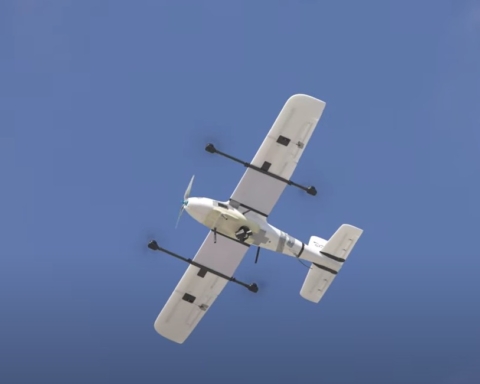Imagine a docker who, with the help of modern technology, is able to move heavy loads on the quayside, reducing the risk of contracting disabling chronic occupational diseases, which are so common among port workers.
It all sounds like science fiction, but it could soon become reality. The North Tyrrhenian Port Network Authority is convinced of this. Over the last few months, it has had two types of high-tech exoskeletons tested on-site at Terminal Darsena Toscana, produced by Comau, a leading industrial automation company: the MATE-XT, which supports the wearer’s upper limbs by replicating physiological shoulder and arm movements and the brand-new MATE-XB, which not only takes care of the upper part of the body but is able to provide passive support to lower back muscles, used during lifting and handling operations.
The pilot study, one of the first to be carried out in Europe and worldwide, was conducted by IUVO, a spin-off company of the Scuola Superiore Sant’Anna (Pisa), in which Comau holds a majority stake through a joint venture with Össur, a company specializing in prosthetic solutions.
For six months, 12 workers from the Compagnia Portuale di Livorno (CPL) wore and used these futuristic ‘suits of armour’ and had the opportunity to directly assess level of fatigue they felt during their daily work activities. The results of the study were extremely positive, so much so that the dockers have welcomed this new technology. They have recognized their positive impact on their health and well-being at work. This demonstrates just how open the port sector is to any innovation that might be useful in improving working conditions.
Both devices, designed to improve port workers’ well-being while performing strenuous operations, have proven to be effective in limiting shoulder and back stress, significantly reducing physical strain and fatigue. According to data collected previously and verified by IUVO and Comau, together with companies that have been using this technology for a number of years, it has in fact been shown that the MATE-XT upper limb exoskeleton and the MATE-XB lumbar device can reduce strain by up to 30%.
“The study conducted together with the Port Network Authority and CPL aims to evaluate how exoskeleton technology can improve the well-being and safety of workers in the port system,” said IUVO CEO Duilio Amico. “Their openness to innovation and attention to workers’ health has been a unique opportunity to test these devices in a sector like the port one. This project confirms IUVO’s and Comau’s commitment to creating an ecosystem for developing and adopting wearable robotic technology that promotes worker well-being,” he added.
Nicola Vitiello, professor at the Scuola Superiore Sant’Anna and co-founder of IUVO, also expressed his satisfaction: ‘The pilot study launched in Livorno port has been an important opportunity to continue testing and perfecting the wearable robotics solutions developed with Comau directly on site, in new ways in different sectors.”
Likewise, the president of the Compagnia Portuale di Livorno, Enzo Raugei, said he was enthusiastic about the initiative: ‘The safety and well-being of our members and employees is a top priority for our cooperative, and this initiative demonstrates our ongoing commitment to ensuring it,”
The president of the Port Network Authority Luciano Guerrieri emphasized how safety and safeguarding workers’ health are fundamental for our institution: “Our constant attention to these factors, combined with our openness and interest in innovation, have allowed us to be one of the first port networks in Europe to test this innovative technology, in view of stressing and improving our commitment to the safety and well-being of our workers.
Translation by Giles Foster




